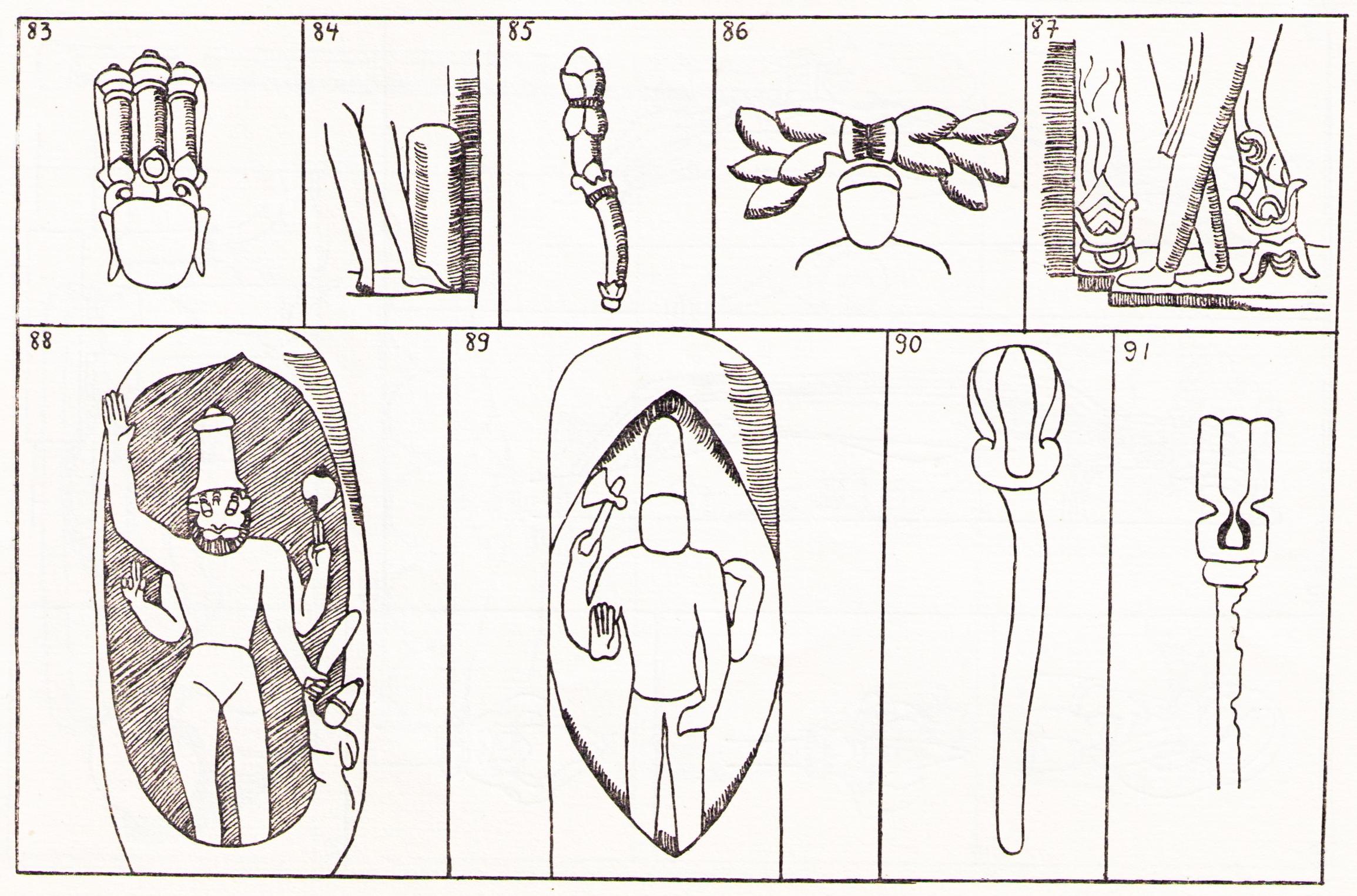
The paper was published in Bulletin of the Deccan College Research Institute 20 (S.K. De Felicitation Volume), Poona 1960, pp. 164-248.
Distinction in Indian Iconography
Figures 83-91:

83. | Skanda. From Suhania, now in the Gwalior Museum. Same piece as in fig. 19. - § 48. |
84. | Female figure (iconography as in the case of fig. 3, but padma instead of nīlotpala). Deogarh (pillar in front of the southern door-way of temple No. 12). - §§ 6, 48. |
85. | Female figure. From Suhania, now in the Gwalior Museum. - §§ 48, 60. |
86. | Ambikā. Deogarh (detached socle of a pillar lying near temple No. 1). - § 48. |
87. | Vegetable forms on lower door-jamb. Deogarh (temple No. 31). - §§ 6, 48. |
88. | Narasiṁha (simplified drawing). G. Jouveau-Dubreuil, Archeologie du Sud de l'Inde, Tome II: Iconographie, Pl. XXVI. - § 6. |
89. | Śiva's Liṅgodbhavamūrti (simplified drawing). Ambar-Māgāḷam. Rao, II, I, Pl. XIV, Fig. 2. - § 6. |
90. | Śaiva ascetic. Gwalior (Telī-kā-mandir, wall-figure No. 9). In the drawing, the vegetable character of the trident is slightly exaggerated. - §§ 48, 70. |
91. | Śaiva ascetic. Gwalior (Telī-kā-mandir, wall-figure No. 26). - §§ 1, 70. |
Additional Note:
Deogarh, Dhaura, Chandpur, Dudahi, Siron are situated in the Jhansi District; Būḍhī Chanderī, Golakot, Indor in the Guna District; Padhavli and Suhania in the Morena District; Pavaya and Naresar in the Gird District; Gyaraspur in the Bhilsa District; Kota in the Shivpuri District; Jhalrapatan in the Jhalavar District. For details refer to the following publications:
Cunningham, A.:
A.S.I. X, Report of Tours in Bundelkhand and Malva in 1874-75 and 1876-77, Calcutta 1880.
Patil, D.R.:
The Descriptive and Classified List of Archaeological Monuments in Madhya Bharat, Gwalior 1952.
Trivedi, H.V.:
The Bibliography of Madhya-Bhārata Archaeology, Pt. I, Gwalior 1953.
The wall-figures of temple No. 12 at Deogarh, of the Tell-kā-mandir at Gwalior, and of the Gargaj Mahādev temple at Indor have been numbered clockwise (pradakṣiṇānusāreṇa). The spurious slab on the south side of the Tell-kā-mandir is included as No. 11; the two Kṣetrapālas to the left and right of the door-way of the Gargaj Mahādev temple are not counted. The three last-mentioned temples are early medieval. - Deogarh temples Nos. 1-31 and the quoted monuments at Dudahi, Siron, Būḍhī Chanderī and Golakot are Jain.
 Prof. Dr. Klaus Bruhn
Prof. Dr. Klaus Bruhn